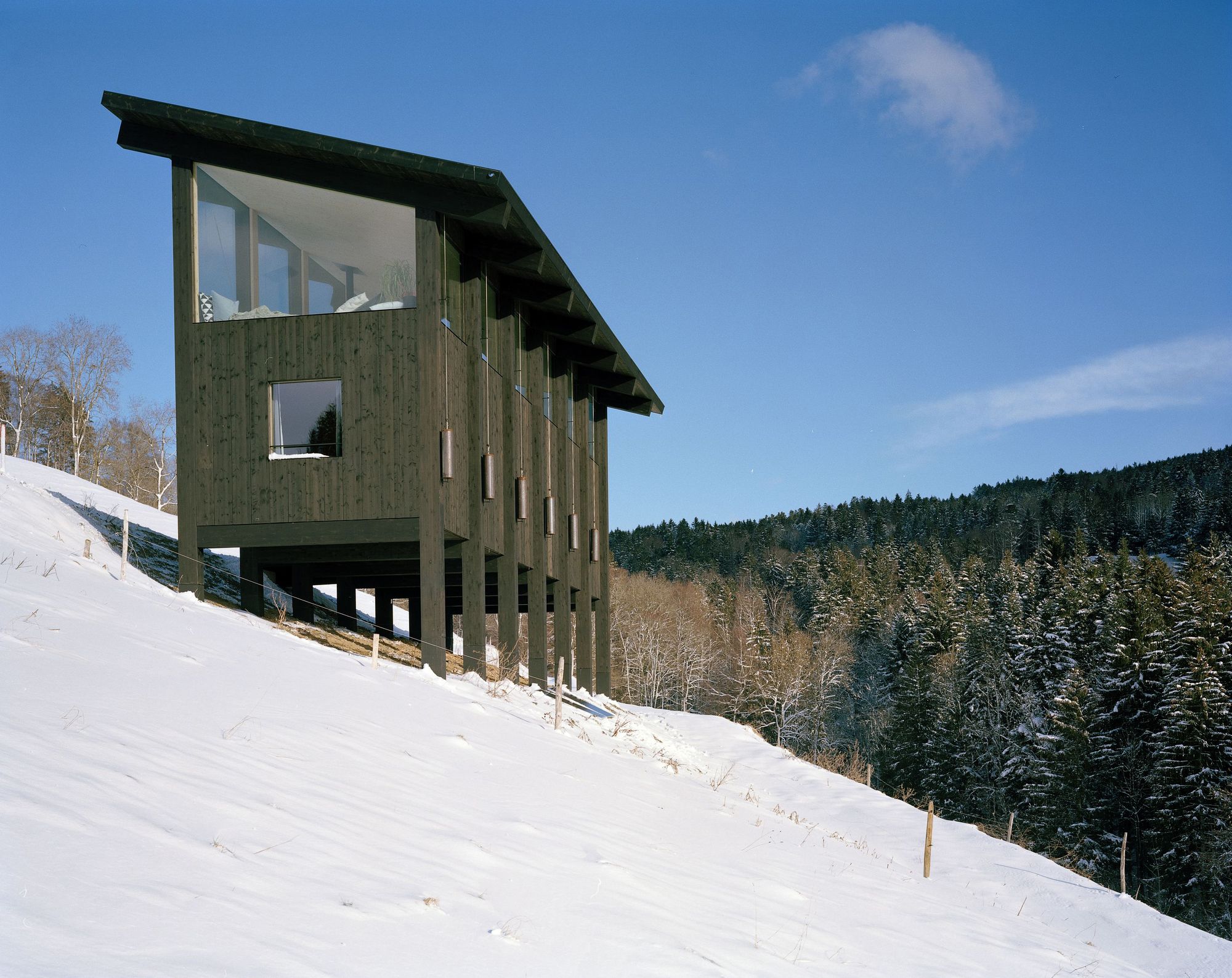Treyvaux Cabin / LVPH Architectes
+ 15
Project Leader: Simon Durand
Masonry: Fréderic Demierre
Locksmith: Vincent Desmeules
Framework: Jean Barras
Electricity: Mauroux Electricité
Plumbing: Raboud Energie SA
City: Treyvaux
Country: Switzerland
More Specs
Less Specs
Text description provided by the architects. The house is located on the heights of the municipality of Treyvaux, on the agricultural domain of the owners. The choice to position the project in the center of the plot was decided for reasons related to the agricultural operation, the landscape character of the site, and the characteristics of the terrain. The entrance is via a walkway to the north.
On the first level, the 2 bedrooms, bathroom, and utility room (reduced to the bare minimum) are organized around the entrance, staircase, and fireplace. Upstairs, the kitchen is centrally located, in perfect symmetry, while the living room and dining room are organized according to preferences. Wide benches extend this space towards the outside. In the south, the 6 windows slide into the facade thanks to a counterweight system, transforming this floor into a unique belvedere.
Entirely made of wood, 7 frames ensure the structure of the facades, floor, and roof. It rests on 14 concrete pilings, minimizing the footprint of the house and integrating it into the steep slope of the land. The house is completely self-sufficient. Drinking water comes from a water source below the house. Electricity is generated by the 63 photovoltaic panels on the roof. Excess energy is stored in two batteries with a capacity of 10 kWh each. In winter, the production is supplemented by 12 additional panels installed on the ground.
During the rest of the year, this installation is moved according to the needs of the agricultural operation. Hot water production is ensured by a heat pump water heater that draws energy from the photovoltaic solar installation. Wastewater is sent to the manure pit of the agricultural operation below. Heating is provided by the single wood stove located in the center of the house. In summer, the south overhang protects against direct sunlight, and the 6 south-facing windows can be fully opened to cool the air during the night.
Source: ArchDaily


